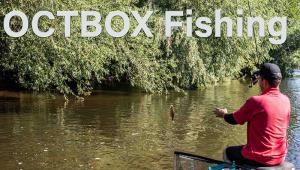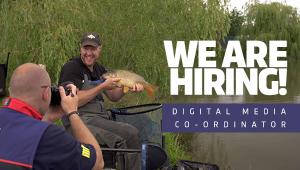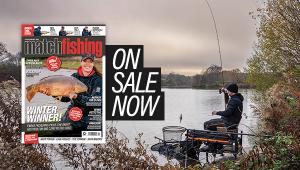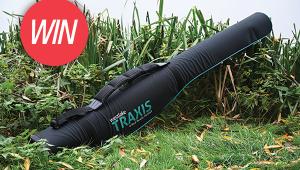Five Of The Best
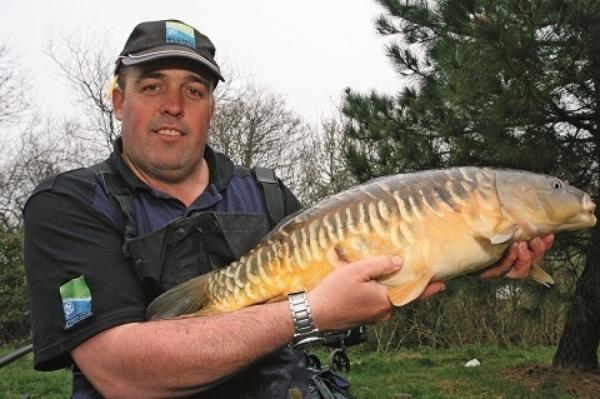
Five top rods reveal their No1 angling tip!
When it comes to catching big weights of fish, and winning matches, it is difficult to get a better list of names than we have below.
We have picked their brains to reveal their five number-one tips to put more fish in your net this bank holiday.
Enjoy!
Alan Scotthorne (Drennan/ Sensas)
Preconceived ideas lead to disaster!
If you drive to a venue expecting to catch in a certain way, you could very well be setting yourself up to fail.
I have learnt this lesson myself the hard way, on commercial fisheries – when today's successful bait or method could very well be totally useless tomorrow. You must approach each day and every peg you draw with an open mind. Think about the weather, the water temperature and take in as much information as you can before formulating your attack – and crucially, if things aren’t working for you, you must never be too slow to change. Remember, fish are fickle creatures with tastes that change like the wind – and you must never be too slow to change with them.
Des Shipp (Preston Innovations/ Sonubaits)
Fish From Your Hand!
As the weather starts to warm up, my number-one tip is to always feed a line somewhere in your peg by hand. I often like to do this down the edge, and where possible I will feed a long pole line via a pole pot as a ‘safe’ option, and a shorter line by hand – and if the fish turn up here, it can be game over!
Fishing is all about giving yourself options – and the beauty of a line that is fed by hand is that you can catch from it really quickly. When it works, you can put as much in your net from a line like this in 10 minutes than you could from a long line in an hour. It really is a deadly weapon to have in your armoury.
Sean Ashby, (Sensas) Current World Champion
Be Prepared
If you are going to stand any chance at all of getting the best from your peg, then you need to be prepared for every possible eventuality. By having all the gear with you that you could possibly need, you are giving yourself the power to make changes and decisions on the bank, and adapt to how the fish are feeding on any given day.
I have got a bit of stick in the past for the amount of tackle that I take to my peg, but I would much rather have the ability to make a change than sit their inanimate, knowing that I should be doing something different but not have the equipment I need to follow my instincts. For this reason, my number-one piece of advice would have to be ‘be prepared!’
Denis White (Maver)
If in doubt, recast!
So much of modern match fishing is dominated by bomb and feeder fishing, and one of my old sayings rings truer than ever nowadays: "It’s only a bad angler that doesn’t make a bad cast." By that I mean, if you cast out and you are not happy with where your feeder has landed, or how it has hit the water, you should reel it back in and recast, without any hesitation. The number of anglers I see miscast and leave the feeder in the water believing it to be ‘okay’ is frightening. You need to be 100 per cent confident that your feeder is where you want it, and presenting your bait properly. Otherwise, you should reel in and recast.
Steve Sanders, (Preston Innovations/ Sonubaits)
Choose quality
My number-one tip applies before anglers even get on the bankside – but I have seen it proved true more times than I care to remember. You should always buy the most expensive tackle you can afford. This applies to everything from rods and reels to poles, seatboxes, and even line or floats.
I have been in the tackle trade for a very long time, and trust me – you get what you pay for. If your tackle is 10 per cent better than your opposition, then it will improve your performance by 10 per cent over the course of a season – and probably save you money in replacing faulty cheap products as well.
When it comes to catching big weights of fish, and winning matches, it is difficult to get a better list of names than we have below.
We have picked their brains to reveal their five number-one tips to put more fish in your net this bank holiday.
Enjoy!
Alan Scotthorne (Drennan/ Sensas)
Preconceived ideas lead to disaster!
If you drive to a venue expecting to catch in a certain way, you could very well be setting yourself up to fail.
I have learnt this lesson myself the hard way, on commercial fisheries – when today's successful bait or method could very well be totally useless tomorrow. You must approach each day and every peg you draw with an open mind. Think about the weather, the water temperature and take in as much information as you can before formulating your attack – and crucially, if things aren’t working for you, you must never be too slow to change. Remember, fish are fickle creatures with tastes that change like the wind – and you must never be too slow to change with them.
Des Shipp (Preston Innovations/ Sonubaits)
Fish From Your Hand!
As the weather starts to warm up, my number-one tip is to always feed a line somewhere in your peg by hand. I often like to do this down the edge, and where possible I will feed a long pole line via a pole pot as a ‘safe’ option, and a shorter line by hand – and if the fish turn up here, it can be game over!
Fishing is all about giving yourself options – and the beauty of a line that is fed by hand is that you can catch from it really quickly. When it works, you can put as much in your net from a line like this in 10 minutes than you could from a long line in an hour. It really is a deadly weapon to have in your armoury.
Sean Ashby, (Sensas) Current World Champion
Be Prepared
If you are going to stand any chance at all of getting the best from your peg, then you need to be prepared for every possible eventuality. By having all the gear with you that you could possibly need, you are giving yourself the power to make changes and decisions on the bank, and adapt to how the fish are feeding on any given day.
I have got a bit of stick in the past for the amount of tackle that I take to my peg, but I would much rather have the ability to make a change than sit their inanimate, knowing that I should be doing something different but not have the equipment I need to follow my instincts. For this reason, my number-one piece of advice would have to be ‘be prepared!’
Denis White (Maver)
If in doubt, recast!
So much of modern match fishing is dominated by bomb and feeder fishing, and one of my old sayings rings truer than ever nowadays: "It’s only a bad angler that doesn’t make a bad cast." By that I mean, if you cast out and you are not happy with where your feeder has landed, or how it has hit the water, you should reel it back in and recast, without any hesitation. The number of anglers I see miscast and leave the feeder in the water believing it to be ‘okay’ is frightening. You need to be 100 per cent confident that your feeder is where you want it, and presenting your bait properly. Otherwise, you should reel in and recast.
Steve Sanders, (Preston Innovations/ Sonubaits)
Choose quality
My number-one tip applies before anglers even get on the bankside – but I have seen it proved true more times than I care to remember. You should always buy the most expensive tackle you can afford. This applies to everything from rods and reels to poles, seatboxes, and even line or floats.
I have been in the tackle trade for a very long time, and trust me – you get what you pay for. If your tackle is 10 per cent better than your opposition, then it will improve your performance by 10 per cent over the course of a season – and probably save you money in replacing faulty cheap products as well.
- Log in or register to post comments
LATEST VIDEO

